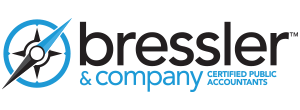Are Your Tax Deductions an Audit Risk?
When is an itemized deduction high enough to cause an audit risk? The tables below give you some examples of acceptable numbers.
Many things can make a tax return look suspicious, but outsized deductions are easy for a computer to catch. The tables show the average deductions claimed by taxpayers. A deduction that is well above the normal for a given income level is a red flag.
The government publishes statistics on deductions, and these are available in many tax publications and in tax software like TurboTax. But what you usually get is a blurred view from 40,000 feet up: All the returns in an income range of, say, $200,000 to $500,000 are lumped into a single average. That kind of number is useless. A $13,000 charity deduction that would be unexceptional on a $490,000 return would stick out at the $200,000 level.
The numbers in these tables are fine-tuned. I’ve used the IRS stats and the fact that incomes and deductions fall into predictable patterns to interpolate deductions at different income levels. (One example of a pattern: High incomes fall off in frequency much the way billionaires thin out as you progress up the wealth ladder of the Forbes Rich List.)
The number displayed for one kind of deduction is the average for all returns at that income level that claim that particular deduction. Consider the $26,587 medical deduction average on $300,000 returns. Very few taxpayers even claim this deduction, because it is available only to the extent medical costs exceed a floor amount. The average is for the 1 in 35 returns where there’s at least one dollar of medical costs above the floor.
My numbers are based on returns filed for the 2011 tax year. They lump all kinds of returns (married joint, married separate, single, head of household) together at each level of adjusted gross income. The deduction for state and local taxes combines what is claimed for income taxes (or sales taxes, where taxpayers chose that deduction instead) with what is claimed for property taxes.
Some things to consider when you contemplate whether your Schedule A list of itemized deductions will look excessive to an IRS computer program:
Your geography. Oppressive property taxes are the norm in New Jersey. They are not in Kentucky. I presume that the audit software knows this.
Your W-2. It shows the amount withheld for state and city income tax. If the amount you claim for income tax is pretty close, this part of your 1040 probably won’t trigger an audit, even if it is high. (Bear in mind that taxpayers can’t inflate this deduction with excessive withholding, since state refunds are reported to the IRS as income.)
Your age. I’ll wager that a large fraction of returns claiming medical deductions on Schedule A are for taxpayers residing in nursing homes. If you are young and claiming medical costs you may get flagged as a troublemaker even your number is close to the average in the table.
What else besides deductions might cause the IRS to pull your bags out for inspection? The tax collectors aren’t about to say, but one can make educated guesses. On my list: self-employment or small-business income (it’s so easy to cheat); property rented to noncommercial tenants (who don’t have to report the rent on a 1099); non-cash donations that are high in relation to cash donations; a Schedule C business loss for a pleasant activity like winemaking; anything that looks like a tax shelter.
Taken from Forbes.com, 2/11/2014, by William Baldwin
Be assured that when your tax returns are prepared by Bressler & Company, we have reviewed them for items that could cause an audit flag. If you have any questions, give us a call at 559.924.1225.







